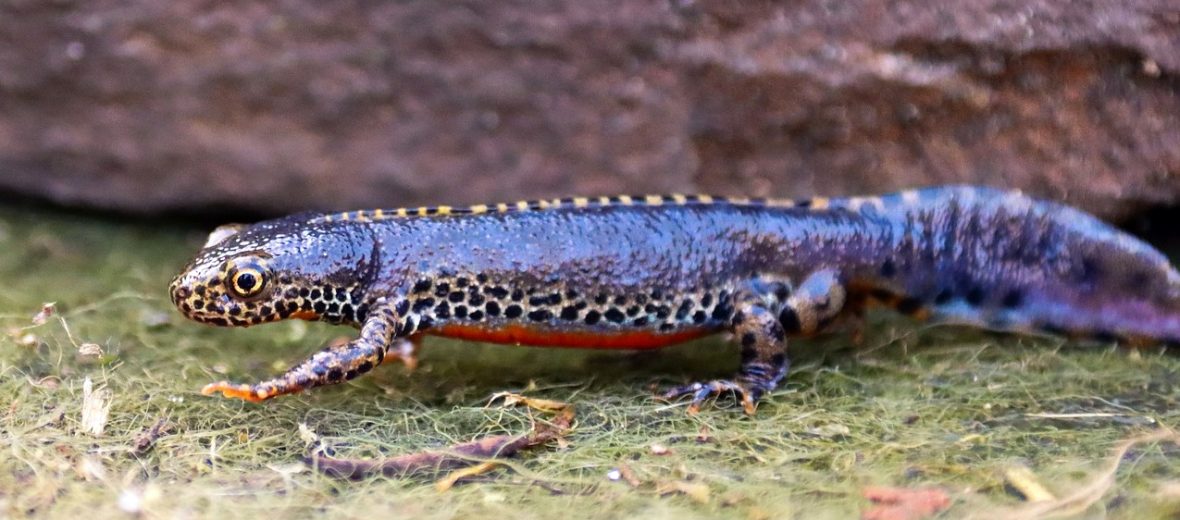
The alpine newt can be found throughout continental Europe and has been introduced to the U.K. as well as New Zealand. They prefer deciduous and coniferous forest habitats with access to cool, clean water. Despite habitat destruction and pollution, these newts are still listed as Least Concern by the IUCN. Their populations are decreasing though. These newts also have the capability of spreading the deadly Batrachochytrium dendrobatidis, aka Bd, or the amphibian chytrid fungus, if contaminated with it and introduced into new environments.
First the Stats…
Scientific name: Ichthyosaura alpestris
Weight: Up to .22 ounce
Length: Up to 4.72 inches
Lifespan: Up to 30 years
Now on to the Facts!
1.) These newts are semi-aquatic, spending up to 10 months on land and returning to their local water body to breed.
2.) While in the larval stage, they prey on ostracods, amphipods, and small invertebrates that fall into the water. While on land, as efts and adults, they prey on insects, spiders, worms, and woodlice.
3.) Alpine newts are nocturnal (active at night).
4.) Paedomorphy (adults retain their gills and remain aquatic) sometimes occurs in this species.
5.) Adults are preyed on by snakes, fish, birds, hedgehogs, martens, and shrews. The larvae are preyed on by large diving beetles.
But wait, there’s more on the alpine newt!
6.) When an adult newt is threatened, they will expose the warning color of their abdomen by bending backwards or raising their tail. They will also secrete a toxic milky substance.
7.) In an experiment, alpine newt larvae raised in the presence of caged dragonfly larvae took longer to emerge from the larval stage. They grew slower and emerged later in the season than newts that didn’t have a predator present. They also had darker colors, bigger bodies, a larger head and tail, & were more wary than their predator-free companions.
Did you know…?
Only trace amounts of tetrodotoxin have been found in alpine newts. Tetrodotoxin, in some amphibians is lethal when introduced to the blood stream of a predator.
8.) These newts, when threatened, can also produce various sounds.
9.) Females lay up to 390 eggs, each season.
10.) A female can produce eggs that are fathered from multiple males.
Now a Short Alpine Newt Video!
Be sure to share & comment below! Also, check out the Critter Science YouTube channel. Videos added regularly!
Want to suggest a critter for me to write about? Let me know here.
Think you know a lot about critters? Try your hand at these fun, free quizzes:



